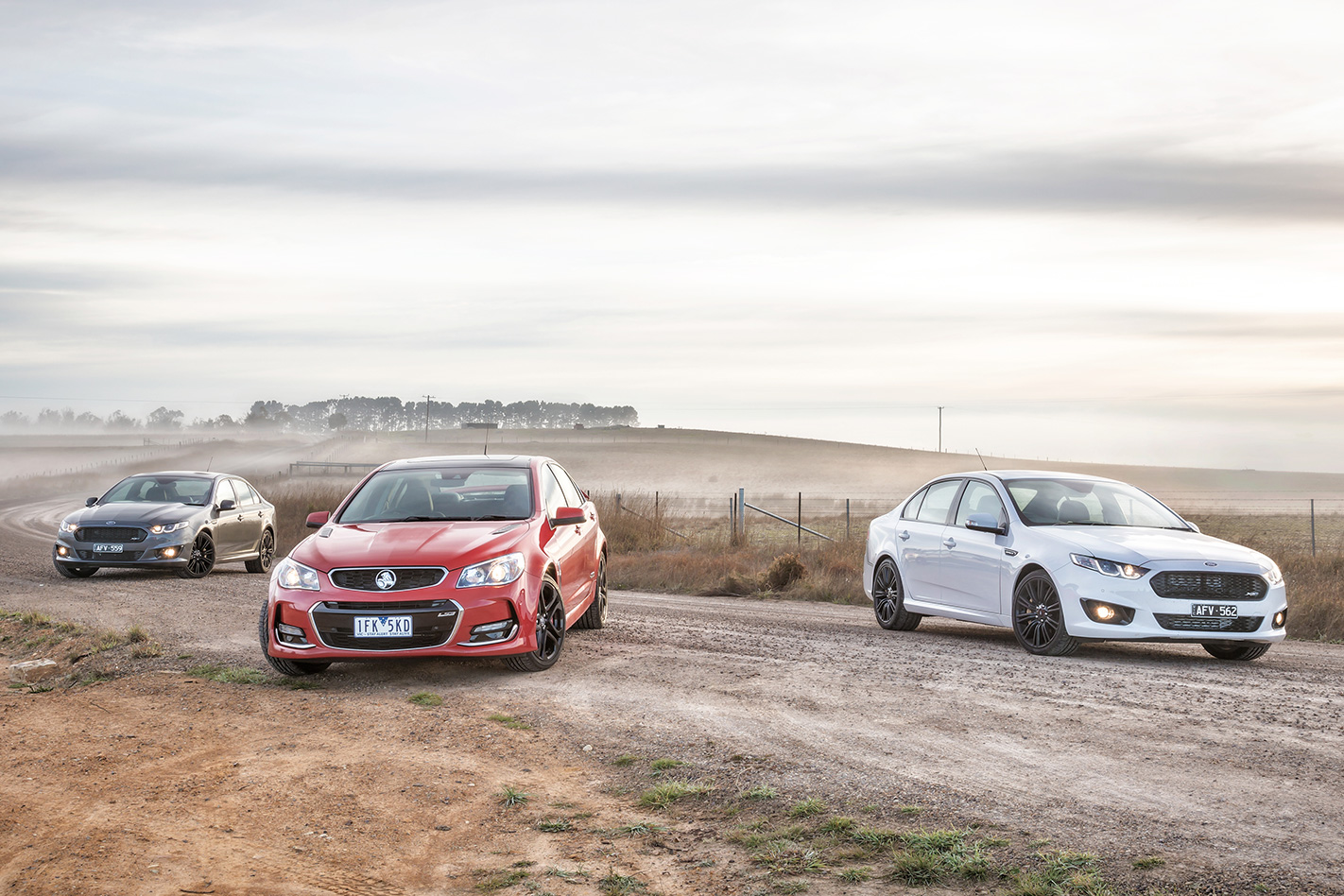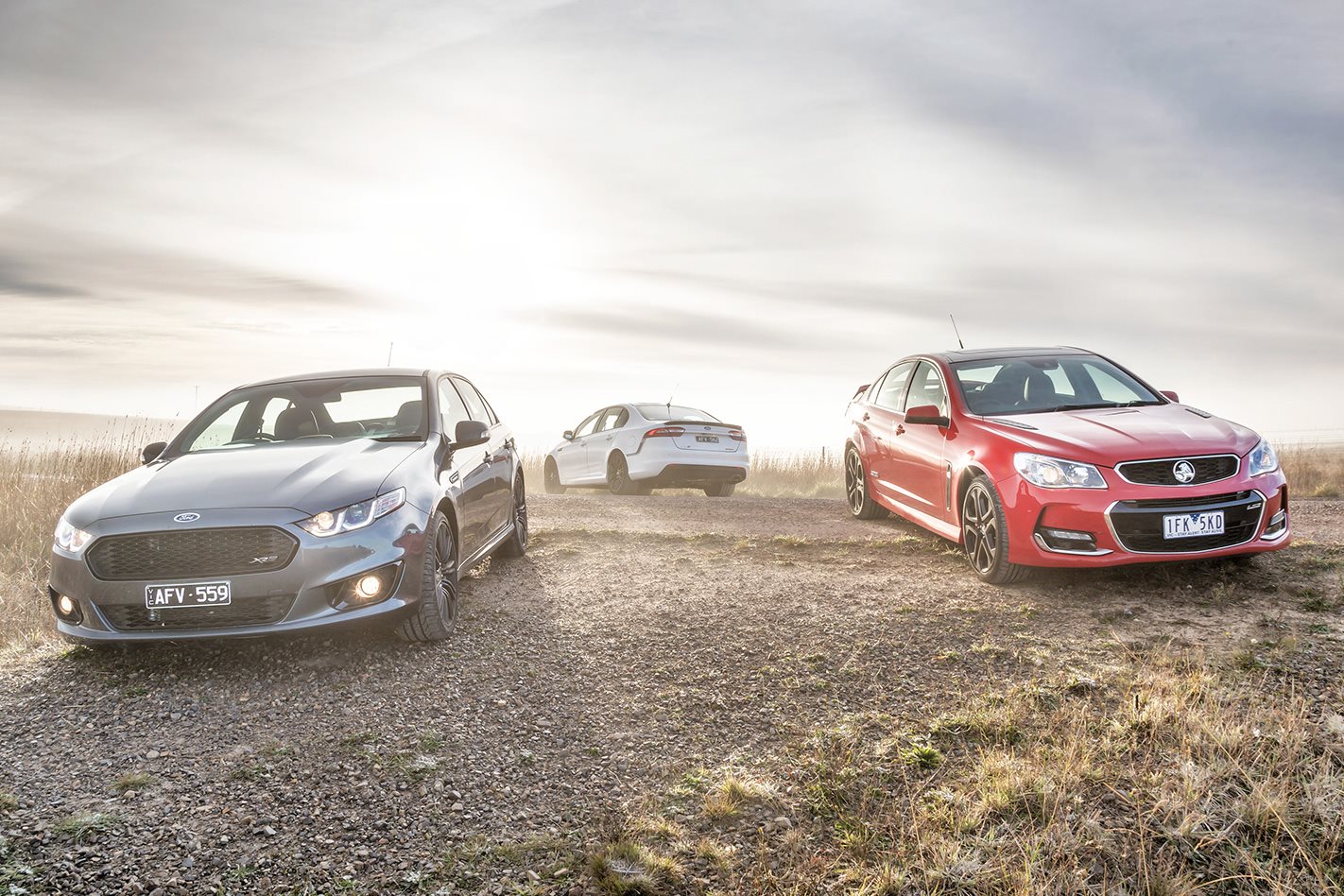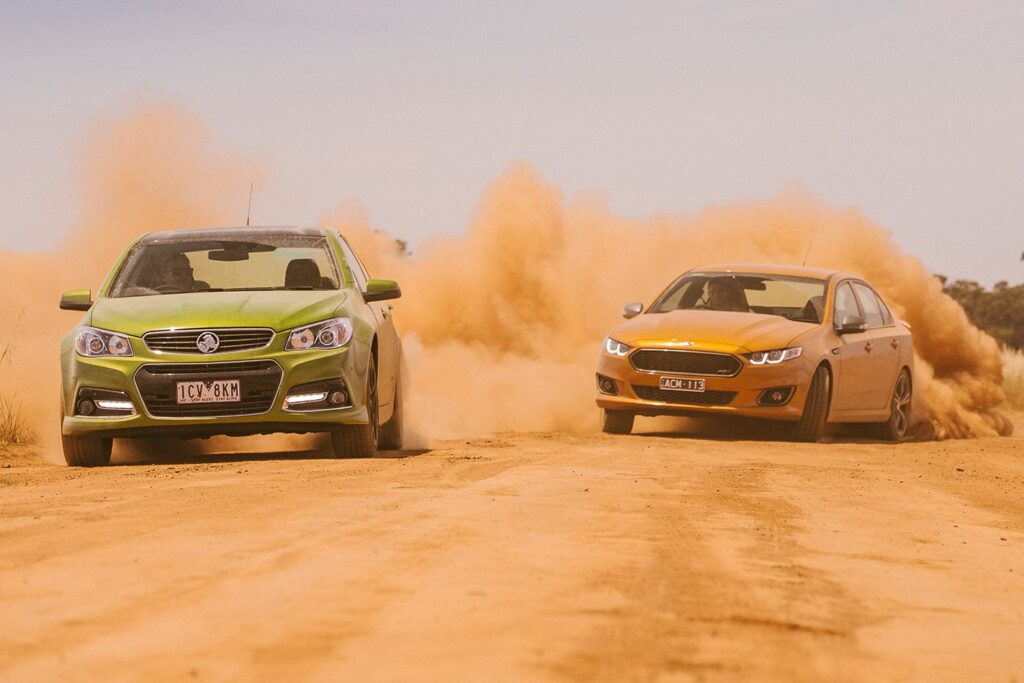AUSTRALIA is changing, faster than we think. In fact, it’s about to get one hell of a hurry-up as these two long-standing staples of life – the Ford Falcon and the Holden Commodore – cease to exist in their current forms.
In the Holden’s case, it will morph into a large German-built, front-drive or all-wheel-drive hatchback, still wearing the Commodore nameplate. The big Ford will soon disappear into an uncaring world gorging on tubby SUVs.
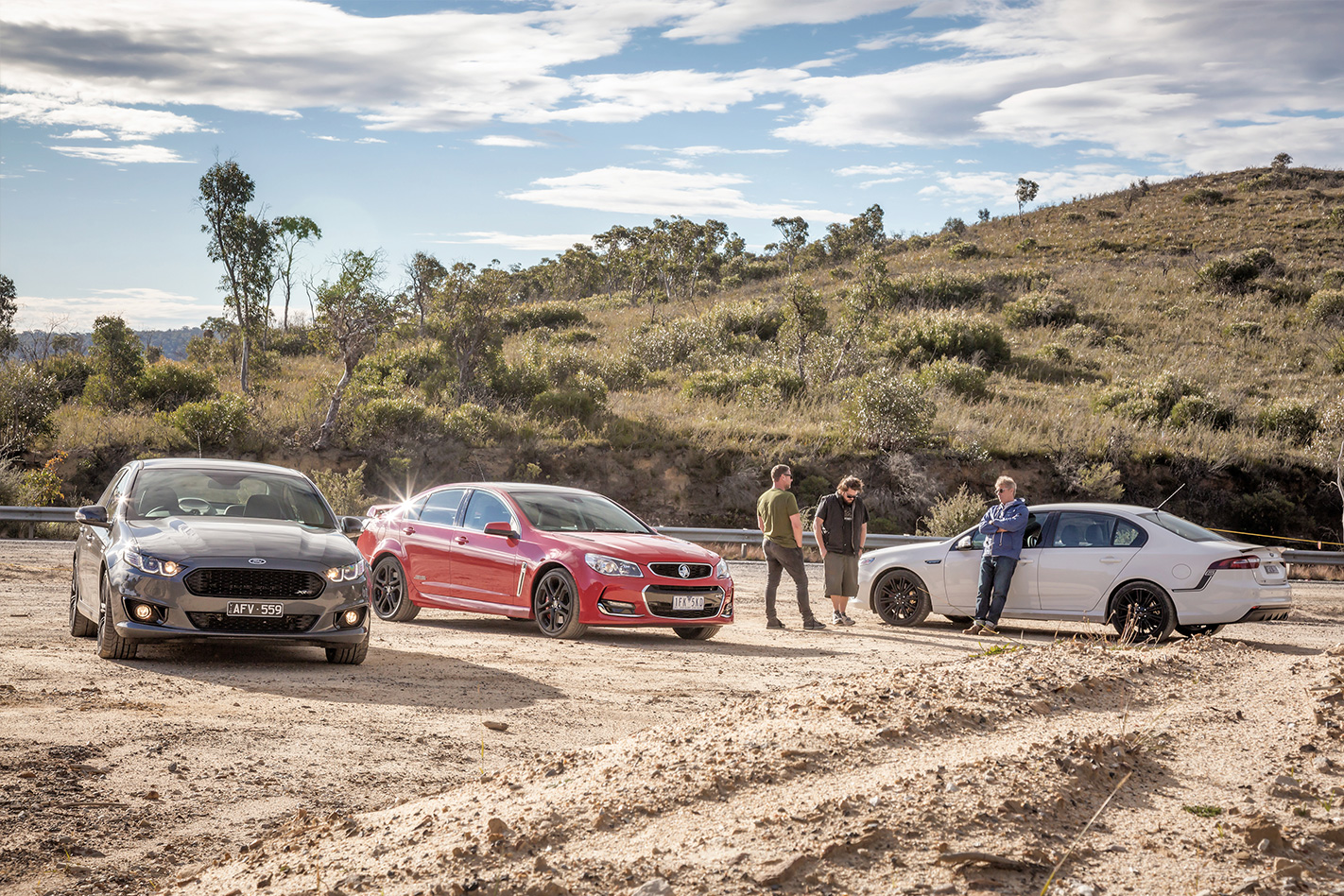
Some of you will be thrilled to bits, cultural cringe in full bloom, relieved that other products will soon dominate the Wheels cover. Not us. Not when Ford’s final Sprint-badged XR6 Turbo and XR8 are bowing out boasting best-ever acceleration and finest-ever handling talent, and Holden’s excellent SS-V Redline sets the benchmark for affordable performance and dynamic ability. So it’s not just with a heavy heart that we’re farewelling Australia’s fiercest and longest-running rivalry, it’s with a legitimate cause for celebration because these rear-drive brutes have never been better.
Or faster. While FPV’s final car – the 351kW GT-F – was a smidge perkier than today’s 345kW XR8 Sprint, the difference is so insignificant as to be virtually redundant. On a perfect surface at Ford’s You Yangs speed bowl in 2014, we clocked 0-100km/h in 4.68sec for the GT-F automatic and standing-400m numbers of 12.68sec and 186.7km/h. Yet here we have the same Smoke Grey XR8 auto that struggled to get its power down at Sydney Dragway a month ago managing to rip through the same increments in record time for this test. And that’s despite its launch control having gone to a long Friday lunch, never to return.
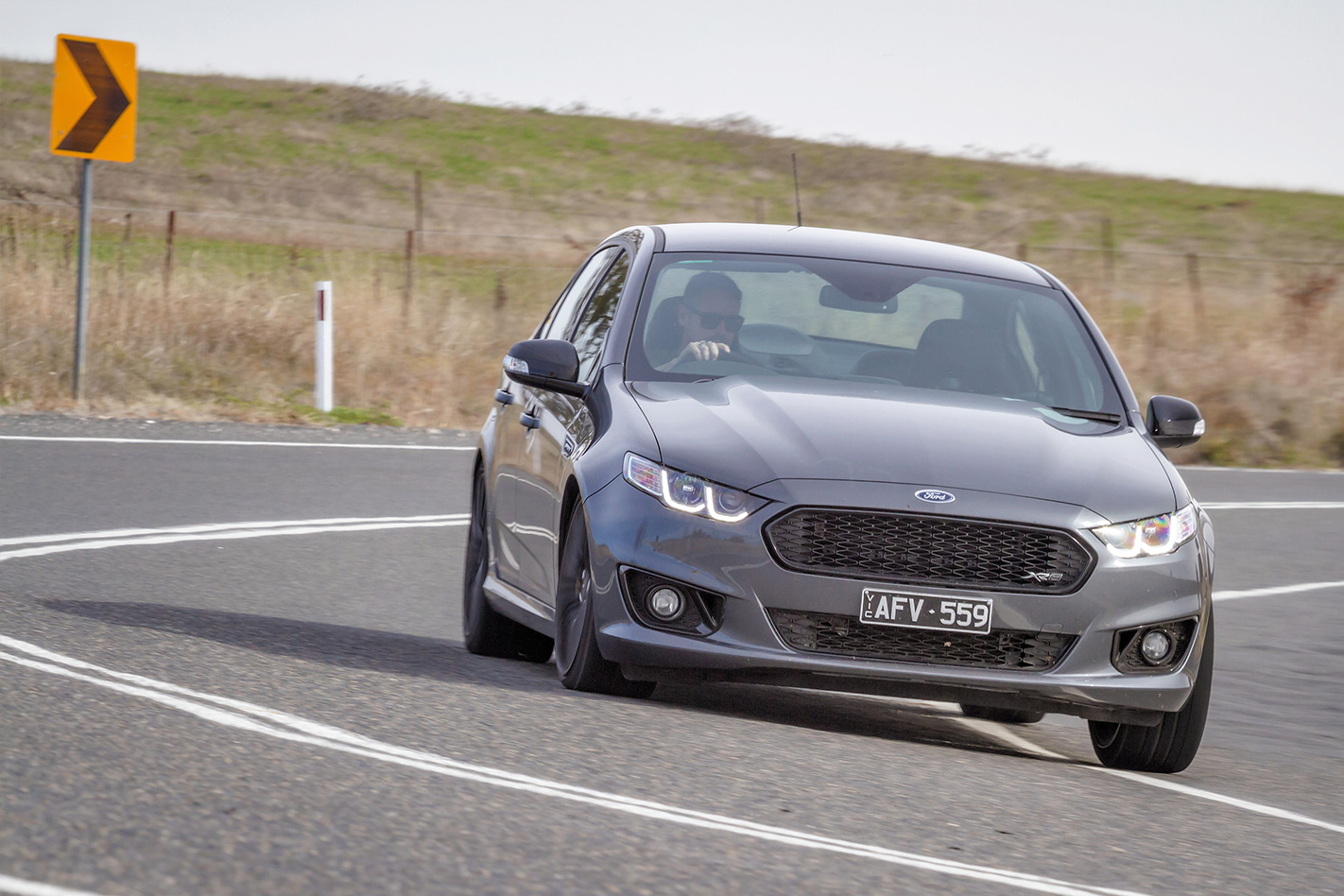
Interestingly, the mega-boosted six-pack Falcon can’t beat its V8 stablemate. With launch control at full fitness, the 325kW XR6 is pretty much neck and neck with the XR8 until 70km/h, when the eight begins to assert its dominance. Even at 100km/h, the XR6 is less than one-tenth behind (at 4.84sec) but its standing-400m time tells the true story, registering 12.93sec at 181.5km/h.
And there’s something about the turbo six’s power delivery that never feels as natural. It won’t rev as freely as the blown V8, as if its ECU is trying to dial back boost pressure – even with 370kW available when overboost is cranking – and it doesn’t sound as characterful, either, unless you prefer a whooshy soundtrack. Yet it remains super-strong and beautifully smooth, overlaid with lush exhaust blurting on upshifts, and some turbo whistle for good measure. And there’s always its 80-120km/h time to fall back on which, at 2.5sec, is identical to the XR8’s.
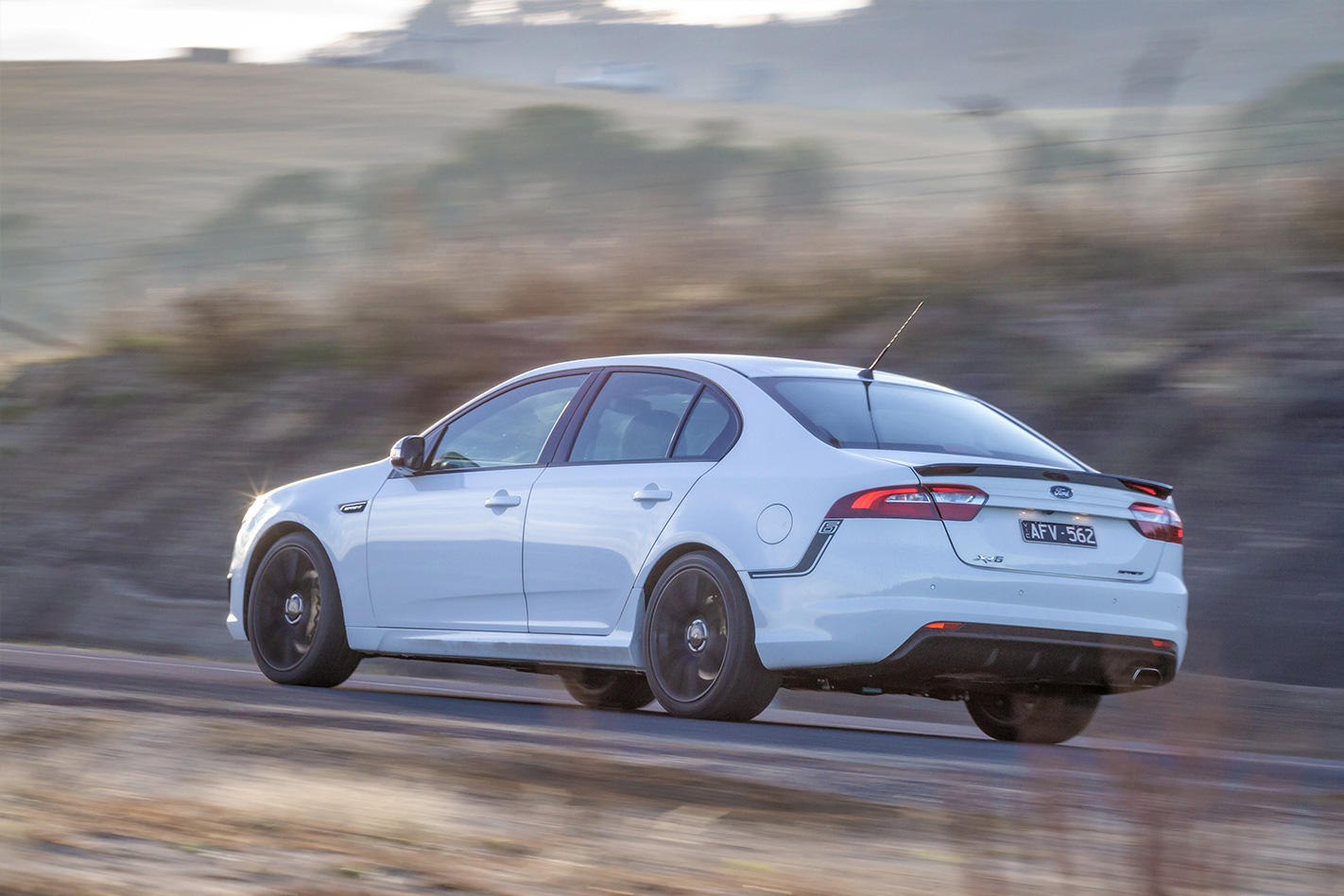
And no one could complain about the way today’s VF Series II V8 sounds. I began my Wheels career driving Gen III-engined VTIIs and VXs that were relatively weak at the bottom end and way too quiet everywhere, which is something you could never say about this 6.2-litre LS3. Right foot flat, it trumpets a bent-eight bellow into the cabin while thrilling bystanders and passengers alike with its fruity, crackle-laden, quad-exhaust note. And every time you back off the throttle, there’s a hint of overrun crackle as well. GM will need to perform some serious R&D surgery on this car’s twin-turbo V6 successor if it’s ever going to get close to this.
Given the XR6 Sprint’s auto-only status, we chose automatic versions of the XR8 Sprint and SS-V Redline for this test. All are six-speeders that have since been retired in other markets – long ago in the case of the German-made ZF auto fitted to up-spec Falcons since 2005’s BF update.
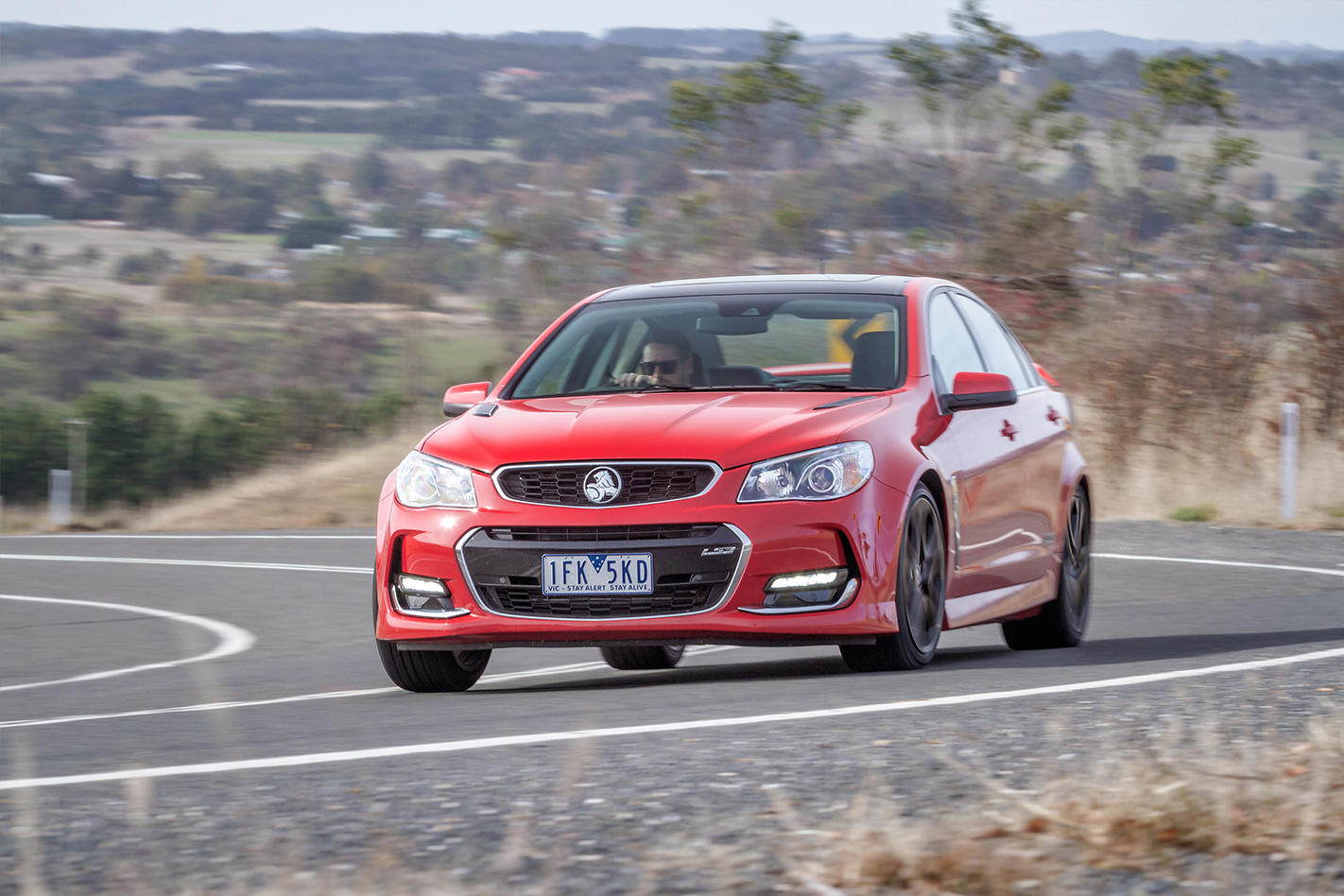
The Commodore also relies on a decade-old six-speed auto, GM’s 6L80E that debuted on VE. But it has received several refinements over the years, including a significant recalibration and downshift rev-matching to coincide with the VE Ute intro in 2007, and steering-wheel paddles on VFII in 2015. Because of these improvements, it’s a more versatile ’box than the ZF, and a more cohesive match to the LS3 V8, with a more effective ratio spread, particularly for track work or really tight roads.
The forced-induction Falcons are significantly taller-geared than the atmo Commodore, but with a rev ceiling of 6700rpm versus 6250rpm, the Holden can stretch its shorter legs further to almost match the Fords’ speeds in first gear.

But it’s cruising in top that defines the difference between the brands. The Fords are geared for 66.9km/h per 1000rpm compared to 58.1, enabling greater use of their torque reserves when devouring country roads… providing you aren’t relying on cruise control.
Where the Commodore’s cruise will kick down a gear, and sometimes two, to maintain speed, filling its cabin with induction richness, the Falcons – particularly the XR8 Sprint – struggle to fulfil the brief. Too much speed washes off before the electronic throttle opens the gas; in the XR8’s case, a really steep hill results in hunting between fifth and sixth, and a drop in pace to as low as 85km/h.
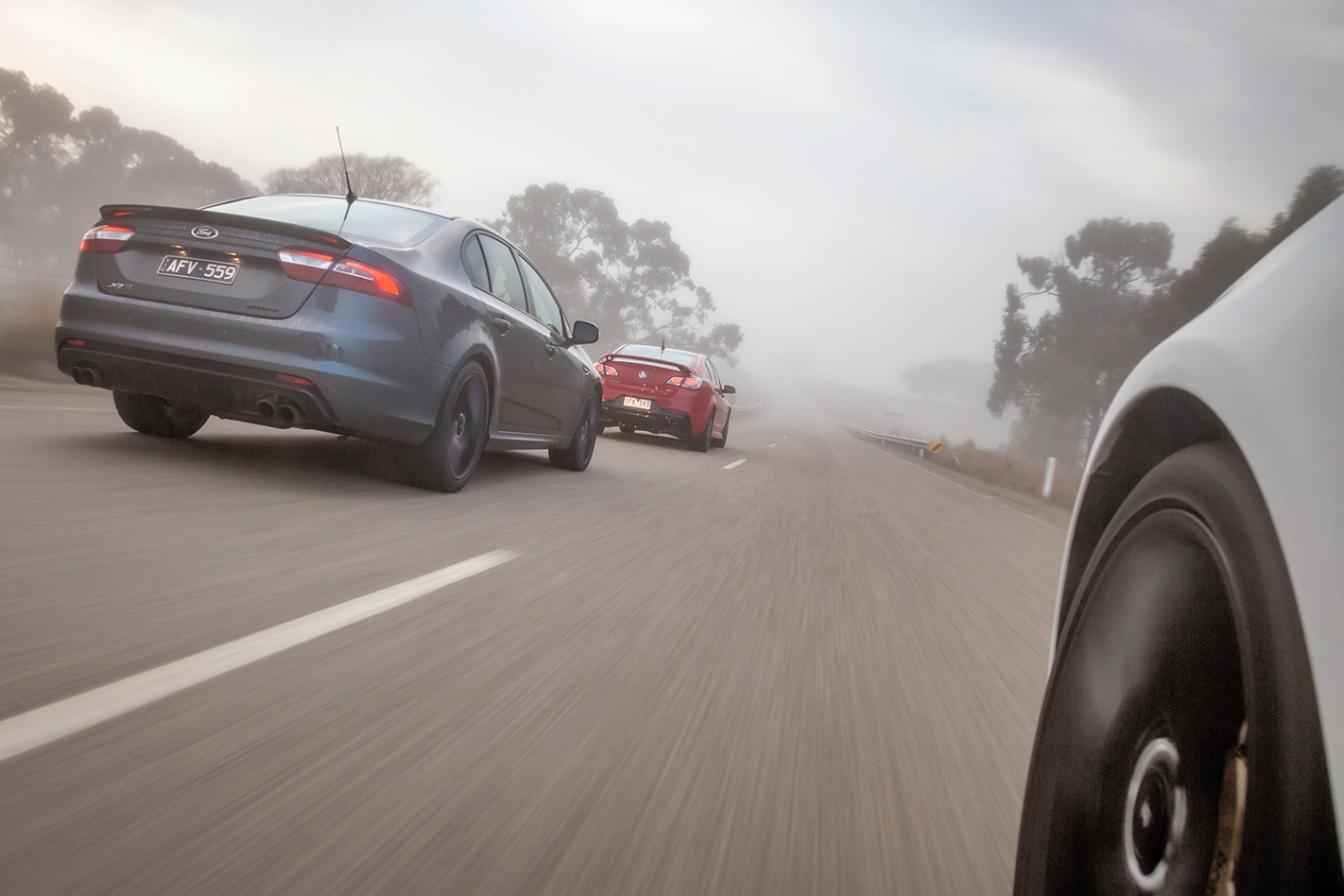
Whether this affected fuel consumption or not is anyone’s guess, but there’s no escaping the Falcons’ greater kerb weight – 1818kg for the XR6 and 1872kg for the XR8 auto versus 1803kg for the SS-V Redline auto – though all of them are built like brick outhouses. And given the performance on offer, their economy is bloody good. The SS-V Redline pips the XR6 by a tiny margin (13.57L/100km against 13.58!) over more than 1000km on test, with the XR8 not far behind at 14.26.
Three litres of additional tank capacity gives the Commodore a greater range, though the Falcon offers a larger 535-litre boot with a handy centre indent to stop cargo sliding around, and a proper split/fold rear backrest compared to the Holden’s broad ski-port with built-in cupholders. But did you know that this very ski-port originated in a Falcon? It was one of the ‘new’ features on the 1984 XF…
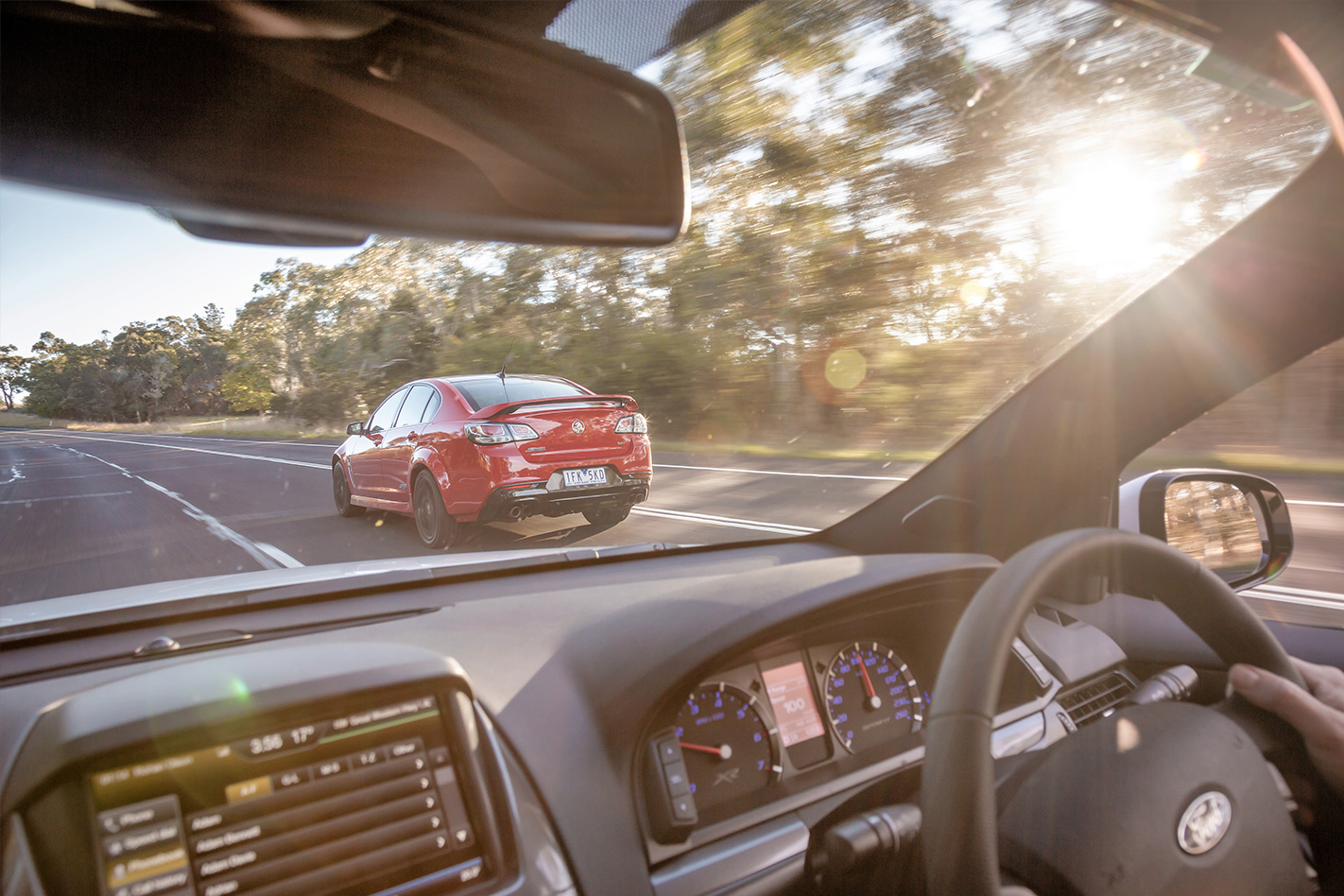
The biggest surprise, however, is that the XR8 is more polished than the XR6. While feedback from the Sprint media launch on snaking Tasmanian roads nominated the XR6 as the pick, the reality in the real world is the opposite.
Indeed, it’s only on really twisty roads that the XR6 clearly holds a dynamic edge. And that’s down to its lighter nose. Where the XR8 can wash wide if your cornering approach lacks patience and placement, the XR6’s affinity with nailing tight corner apexes is stronger, and it tucks in tighter until its rear end inevitably lets go.

Slightly worn tyres and stability control switched off results in an oversteer arc perfectly in tune with the XR6’s ballsy engine ramping up boost. But it does this vigorously, without the desired throttle progression, making an enthusiastic strafe without an electronic safety net all about oversteer minimisation.
Leave ESC on, however, and the XR6 Sprint keeps it together when pushing hard, with much less electronic intrusion than a non-Sprint XR due to its greater dynamic finesse. But you still need to be considered when it comes to steering inputs because the XR6 is very keen to change direction. Perhaps too keen.
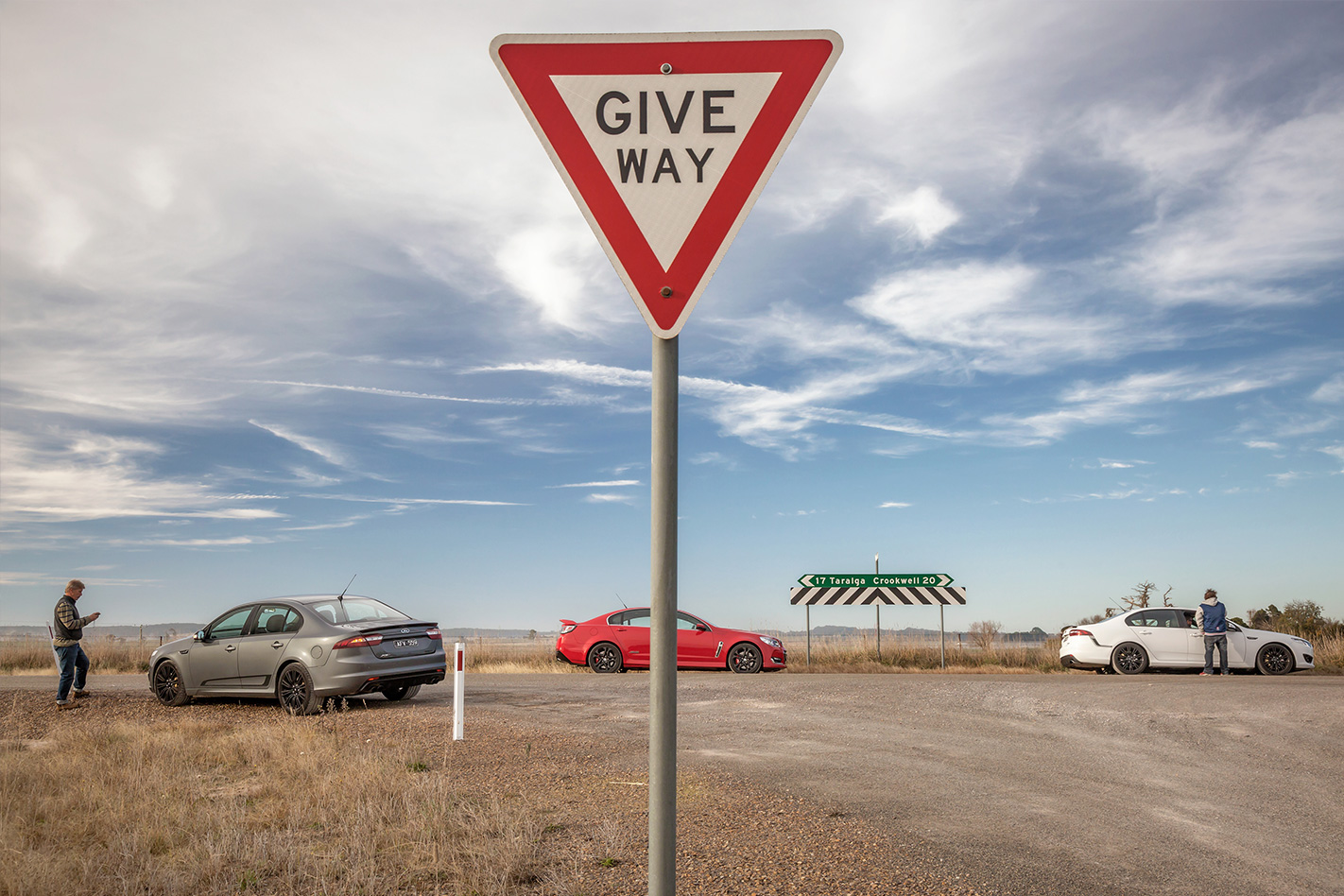
There’s a cohesion to the XR8’s dynamics that the XR6 somehow lacks. Even though it concedes ultimate change-of-direction agility, it loves being hustled on faster roads and actually comes alive the harder you drive it. Chuck it really hard into a corner and you can feel the additional weight up front, but it’s so easy to neutralise with a squeeze of the throttle. And the bond between man and machine grows even stronger the more time you spend with it.
But it’s the SS-V Redline that again takes the ‘driver’s car’ gong. Not only does its engine sound gloriously boisterous when you’re up it, the atmo V8’s more progressive grunt delivery means you can give the Commodore the full boot out of corners much earlier, without the threat of snagging its ESC system – incorporating a unique Competition mode in Redline spec that allows greater slip angles – and impeding its fluency.
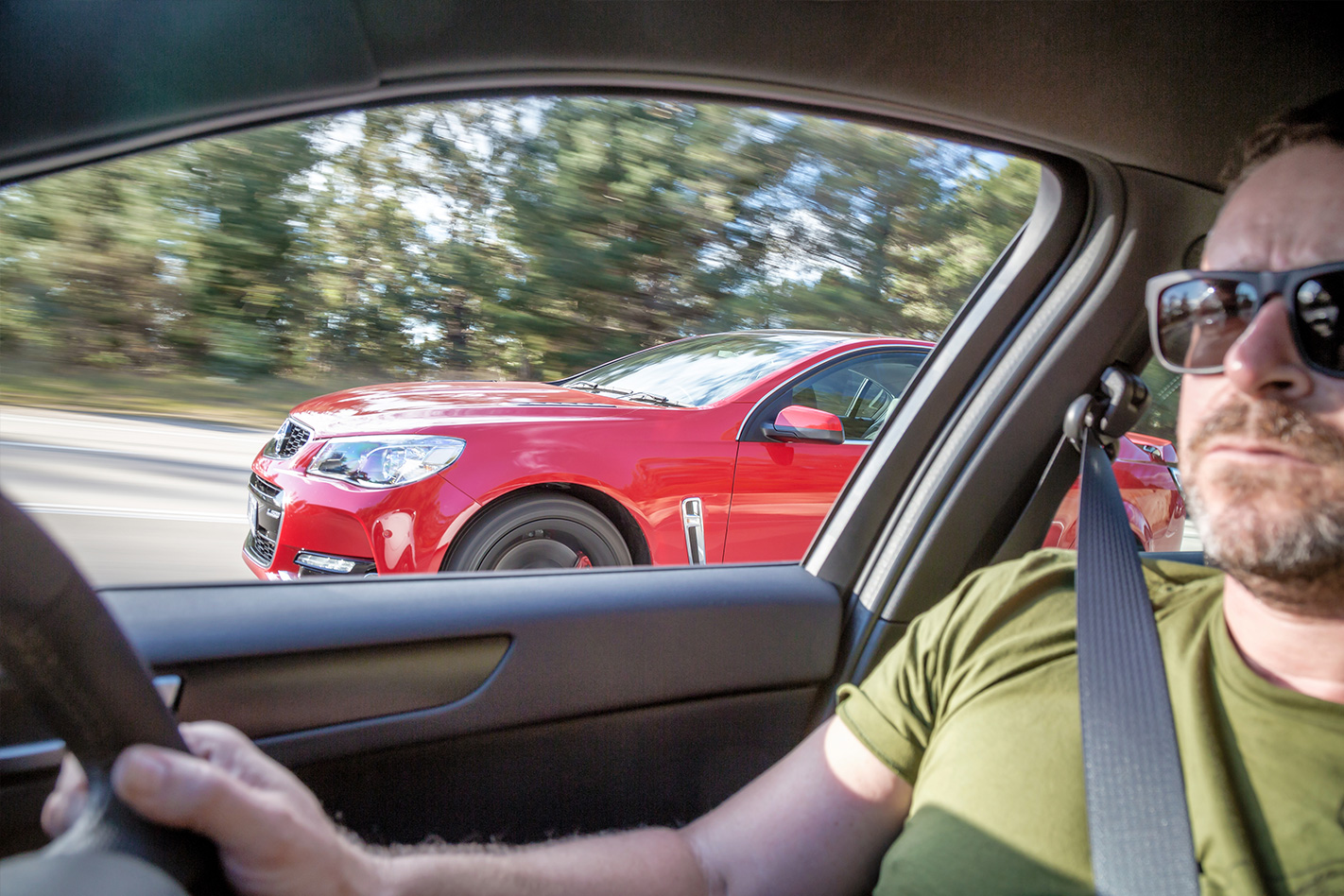
Inexplicably, the XR8 has a much more fluid ride than the jiggly XR6. It feels more relaxed at all speeds, regardless of the load on board, whereas the knobbly XR6 never quite settles, even carrying four adults. And then there’s the XR8’s additional steering meat mentioned earlier, which seems to gel better with its suspension tune. Faced with a big-distance bash, we know which one we’d choose.
Right about now I should probably be talking about interiors, and which car has the best seats, the better stereo and all that comparo gumpf, but none of that really matters anymore. Not when this is the end of the line for the Falcons, both of which sold out almost immediately. There’s probably a regular XR8 still hovering about in a dealership somewhere, not to mention an XR6 Turbo or G6E Turbo, but it’s the Sprints that will always be certified as the last, and the best.
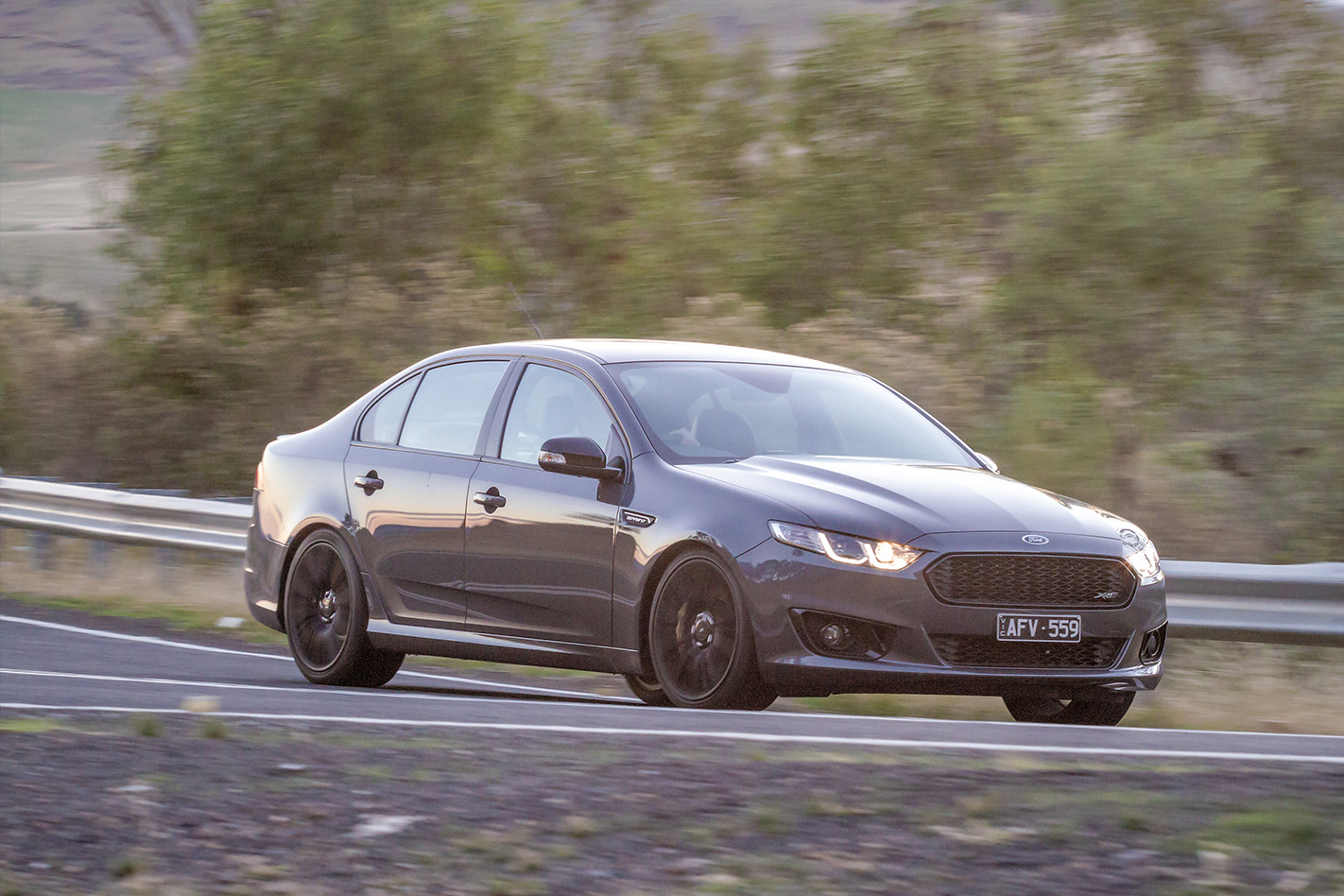
The XR8’s delicious engine and exhaust backing track, mixed with an overlay of blower whine, is utterly addictive – more so than the turbo six’s whistle – and that great big bonnet bulge up front gives it more presence, too. But the smaller build number of the XR6 (500 units for Oz, compared to 750 for the XR8) and its well-liked sticker pack means there’s a strong chance it’ll match the V8’s residual values in the future.
It’s hard to believe it was only 10 years ago that Holden spent a billion Aussie dollars developing the all-new, Zeta-platformed VE, intended at the time to underpin a vast swathe of global GM products that never ultimately eventuated. But if the by-product of that engineering thoroughness is the bank-vault solidity of our 13,500km test Redline – one that has surely been ‘run-in’ with great enthusiasm by the media – then every cent of that investment was money well spent.
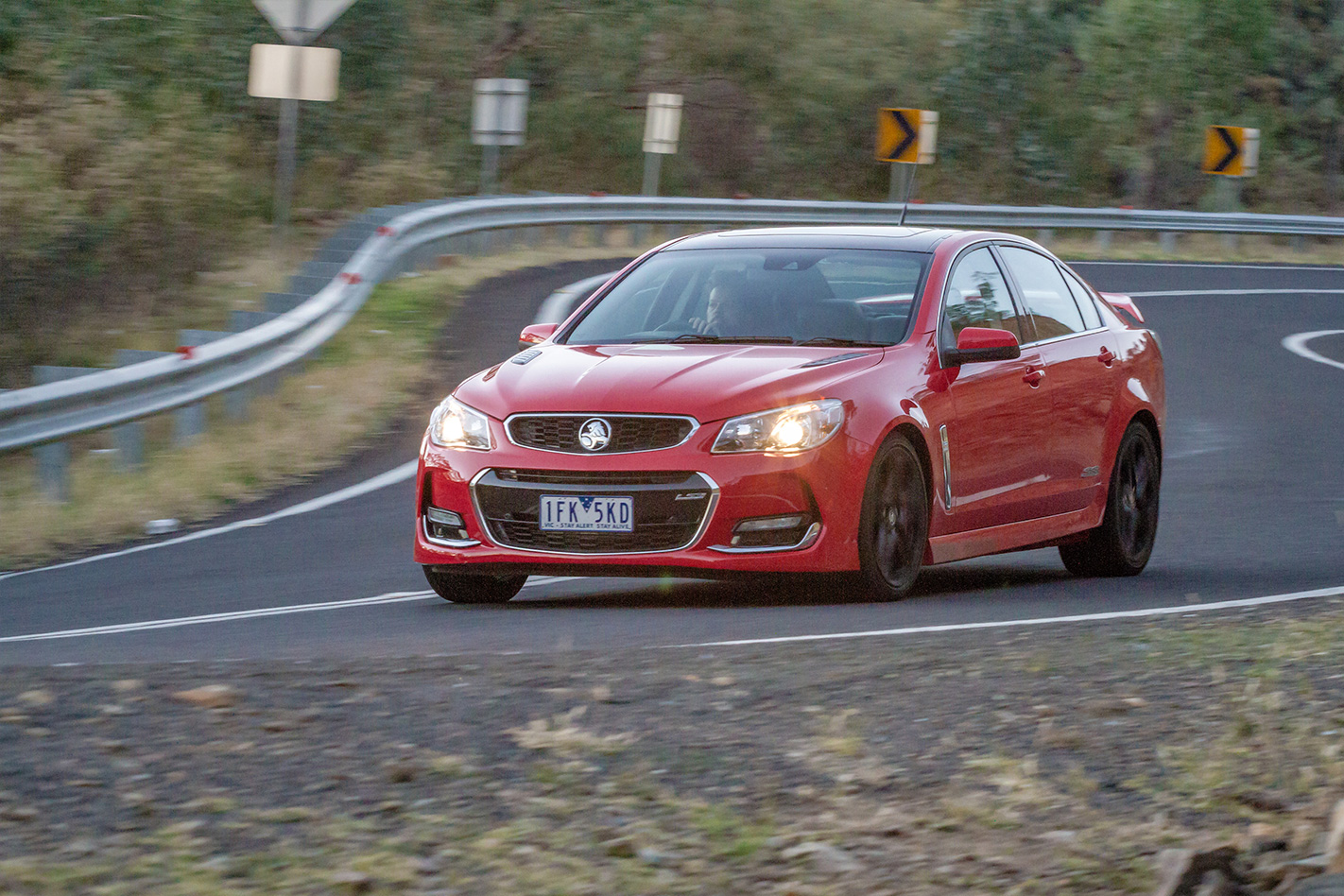
As for the similarly superb SS-V Redline ute, well, there’s still more than 12 months left in the tank to snap up one of those. And then, crickets…
Ford versus Holden, blue versus red, XR versus SS, Broadmeadows versus Fishermens Bend. In a generation or so the young-uns won’t know how intense the rivalry was, and probably won’t care.
But given the depth of our love for hot-blooded Aussie sedans, what you see on these pages isn’t about to be cotton-woolled away for eternity.
Not when it’s all about the driving.
